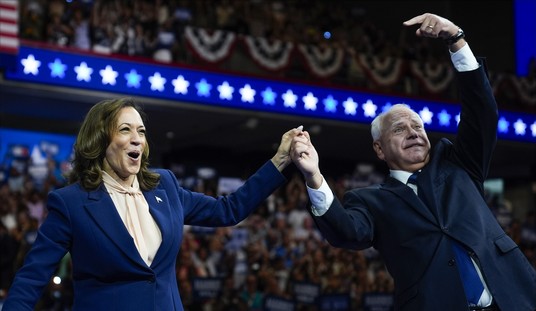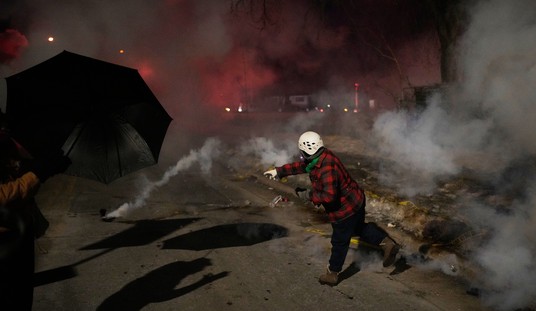Although the most of the Filipino population fought against the Japanese during the Second World War, there were a considerable number of prominent men who supported them. Some were former leaders of the Aguinaldo government which had been defeated during the Filipino American War and who never stopped regarding the United States as the enemy. The most interesting of these was Artemio Ricarte, who seemed to have a knack for choosing the losing side. Ricarte was a general in the losing side who was exiled to Guam and returned surreptitiously in 1903 in order to rekindle an uprising against the US government, only to be turned in by some of his former colleagues. He was rearrested and imprisoned for six years and released. Ricarte eventually made his way to Japan, where he languished in obscurity.
But when the Japanese military fortunes began to decline, Tokyo shipped him back to Luzon where he attempted to organize anti-guerilla unit called the Makapili in December, 1944, at the very moment when other collaborators were beginning to have second thoughts about the light of Nippon suffusing the Orient. That went over like a lead balloon and pursued by American and Filipino forces, Ricarte died as the war ended in Mountain Province, where Yamashita had made his last stand. Interestingly, my mother saw Ricarte’s daughter as she was doing the rounds of Manila schools speaking on behalf of the Greater East Asia Co-Prosperity Sphere, the moniker for the Japanese Empire in Asia. My mother, who was in grade school then, recalls her as a beautiful woman wearing riding breeches and extolling the virtues of Greater Japan. Her fate is not disclosed on the Internet, though doubtless some historian can take up the story.
Most of the collaborators, however, were in it because they thought they had found a winning side. How popular they were is shown by the fact that the President of the collaborationist Republic was shot by his own bodyguard while playing golf. The bodyguard, later executed by the Japanese Kempetai, may have been affiliated with the guerrillas. Many of accounts of that troubled period were subjected to amazing revisionisms when the tide turned against Japan. Today there are some who would actually argue that the Japanese were the victims rather than the aggressors in the Pacific.
One interesting character about whom a movie will soon be made is General Masaharu Homma, the victor of Bataan. If anyone looked the part of the central casting Japanese officer, it was Homma. Tall, shaven-headed and heavily built, he was known as the poet-general, and was a playwright and painter to boot.

Homma with collaborationist Filipino officials
Homma was executed after the war for his alleged part in the Death March. Some now say he was really a sensitive soul who was made a fall guy by General Count Hisaichi Terauchi. The Wikipedia entry says:
With the start of the Pacific War, Homma was named commander of the 43,110 man IJA 14th Army and tasked with the invasion of the Philippines. He ordered his troops to treat the Filipinos not as enemies but as friends, and respect their customs and religion. In one instance, on his approach to Manila, Homma stopped his columns and ordered the men to clean up and tighten formations, knowing that unkempt soldiers are more likely to loot and rape.
This liberal approach towards Filipino civilians earned him the enmity of his superior, General Count Hisaichi Terauchi, commander of the Southern Army, who sent adverse reports about Homma to Tokyo from his headquarters in Saigon. There was also a growing subversion within Homma’s command by a small group of insubordinates, under the influence of Colonel Tsuji Masanobu. In Homma’s name, they sent out secret orders against his policies, including ordering the execution of Filipino Chief Justice Jose Abad Santos and attempted execution of former Speaker of the House of Representatives Manuel Roxas, which Homma found out about in time to stop.
The truth I suspect, will forever be unknown. It is probable that the Japanese, like all other sides in the war, had men of different stripes among their commanders. But the viciousness of the Imperial Japanese Army was a byword and their brutality all too widespread to convince me that simply ordering men to clean up and tighten formations would lead to any discernible effect in their behavior. The men who ran the Death March, who conducted the ratissages were operating within an organizational culture which uniformly produced atrocities wherever they went. So whether Homma was personally guilty in any technical sense is a matter for scholars, but I think the general character of the Imperial Japanese Army — or lack thereof — is not in doubt. However that may be, a new film project is in the works to portray Homma as victim.
A project about the trial of Masaharu Homma is in development. Titled Beast of Bataan, the project is based on the book A Trial of Generals by Lawrence Eric Taylor. Beast of Bataan is written by Chris Carlson and Mark Jean and produced by Jonathan Sanger and Sarah Black. Carlson and Jen had previously worked on a tv film. Fred Schepisi is attached to direct the film, which is slated to begin production in February 2008. Actor Koji Yakusho is attached to portray Masaharu Homma. Actor Hayden Christensen (who is also a producer) is attached to portray the young lawyer who defends Homma, who is on trial for war crimes as charged by General Douglas MacArthur. Actors Willem Dafoe and William Hurt are in negotiations to join the project.
Ironically titled, The Beast of Bataan, the movie site has this plot summary.
1945 Tokyo/Philippines. Four young military lawyers receive the least desirable assignment in the entire postwar occupation of Japan from Supreme Commander Douglas MacArthur – they are to represent a Japanese General (Kôji Yakusho) who has been accused of being responsible for the notorious Bataan Death March.
At first they do their best to evade their new career-destroying assignment. Then they begin to discover that General Homma, known as the “Beast of Bataan,” is a good and honorable man who was not, in fact, involved with the crimes for which he was accused. But MacArthur, bears a secret grudge against Homma, who was the only Japanese officer to ever defeat him in battle.
The young American military lawyers endeavor to save Homma from his obvious fate, fighting not only their own commanding officers but also Homma himself, who knows he is destined to die.
This is a story in which villains turn out to be heroes, heroes turn out to be villains, and a group of young soldiers, along with an imprisoned alleged war criminal, provide a lesson in courage.
Personally I think that unless the film makers have an iron-clad, copper-bottomed case for showing Homma to be innocent, common decency should prevent them from depicting him as a “hero”. The men who were forced to make the Death March deserve the benefit of the doubt too. They were abandoned once by history; what a tragedy if they were abandoned once again by memory.
“So you are dead. The easy words contain
No sense of loss, no sorrow, no despair.
Thus hunger, thirst, fatigue, combine to drain
All feeling from our hearts. The endless glare,
The brutal heat, anesthetize the mind.
I can not mourn you now. I lift my load,
The suffering column moves. I leave behind
Only another corpse, beside the road.”“We’re the Battling Bastards of Bataan,
No mama, no papa, no Uncle Sam,
No aunts, no uncles, no cousins, no nieces,
No pills, no planes, no artillery pieces,
And nobody gives a damn!”










Join the conversation as a VIP Member